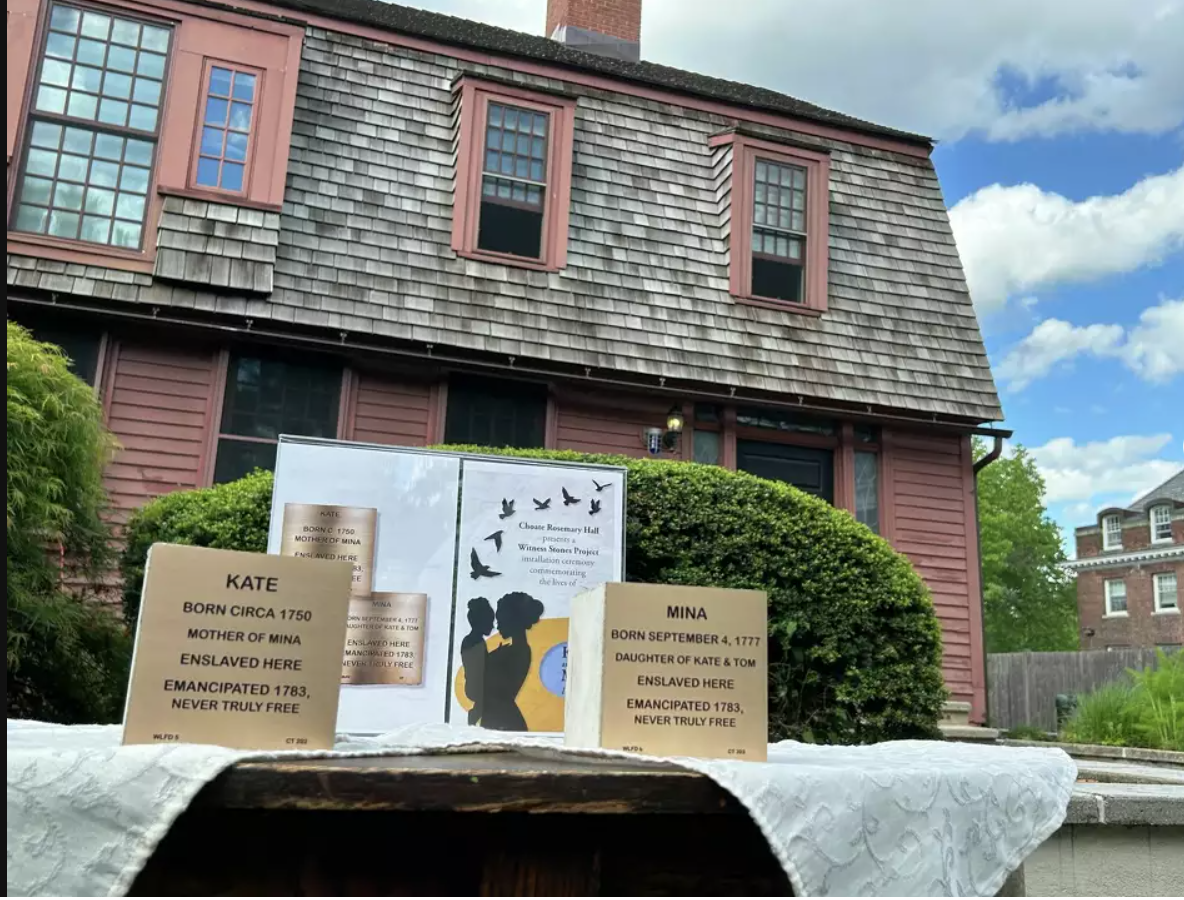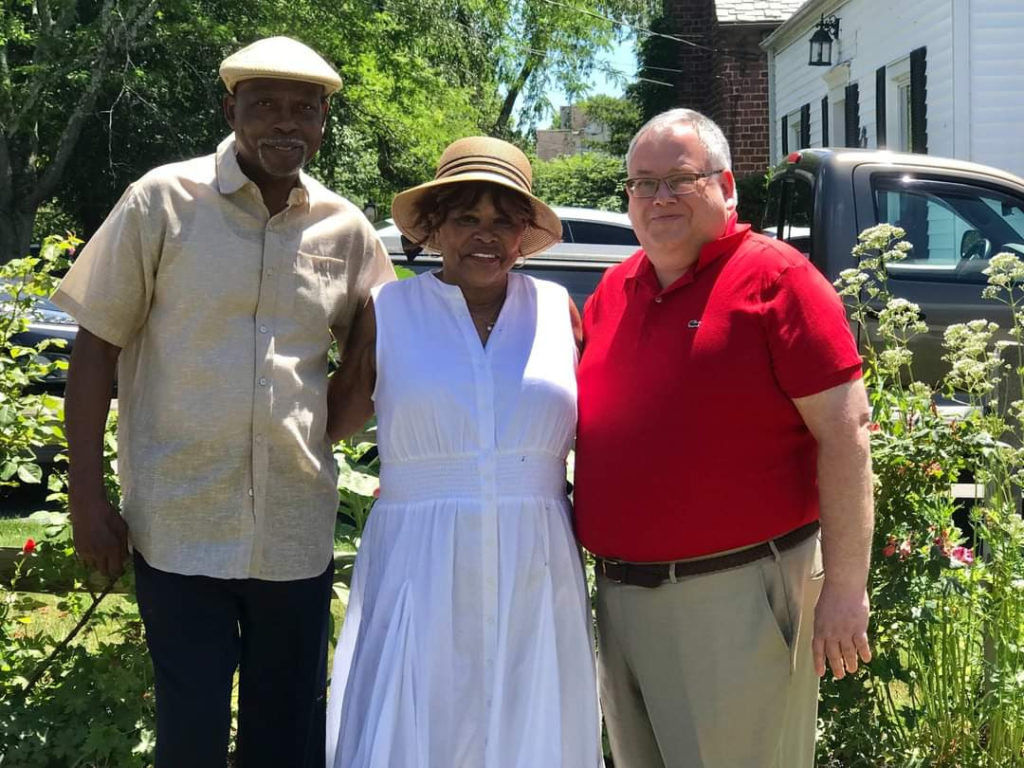
By
WALLINGFORD — Choate Rosemary Hall held a ceremony to commemorate two witness stones memorializing the lives of two slaves once held at Squire Stanley house, one of the oldest buildings in Wallingford that is now incorporated into the school’s campus grounds.
Kate and Mina, a mother and daughter, were both slaves to the house’s owner Oliver Stanley during the late 1700s. Kate was born sometime around 1750, with Mina being born into slavery in 1777 when Kate was around 28 years old. They were both emancipated by Stanley in 1783, six years later, and then both vanished into history.
No other preserved records exist about what happened to either of them after being freed, if they continued to live in Wallingford or what either might have done with their newfound freedom. Choate partnered with Connecticut-based nonprofit The Witness Stones Project, a group dedicated to honoring the memory of enslaved individuals otherwise forgotten to local history, to commission two small golden plaques to be placed at the front of the property.
Inscribed with the names of both women, date of birth, and emancipation, both ending with the phrase “Never truly free” — to note that while they may have been physically freed from bondage, the society at the time had certain expectations that would never allow either Kate or Mina a true freedom.
The project was spearheaded by the efforts of nine students of Choate, who worked with Choate archivist Stephanie Gold and the Wallingford Historic Preservation Trust to uncover the original records about Kate and Mina and brought the Witness Stone project together.
On Tuesday the school held a ceremony to dedicate the stones, along with poems and artwork made by the students in honor of Kate and Mina. Mayor Vincent Cervoni and other members of the public and faculty were in attendance.
“I’m thankful to be part of today’s historic ceremony and wish to express my gratitude to our students and to the support of adults who have enabled their efforts to dive into the historical record, to surface the narratives of Kate and Mina so that we may honor their lives,” said Jenny Elliott, head of student and academic life at Choate.
Here at Choate and in the town of Wallingford, it is our responsibility to explore the legacy of our physical spaces and our community’s historical connections to slavery. We must uplift those untold stories and accurately account for the ways our community and organizations were built out of and from unjust systems.”
After the opening welcome, the students came up to present their poems, followed by Board Chair Patricia Pheanious from the Witness Stones Project, who related the stories of Kate and Mina to her own family history with slavery, and the importance of uncovering those unspoken narratives.
According to Gold, the project of uncovering the history of Kate and Mina was an emotional one for the students. Every student who took part was volunteering in the effort, not being a part of any class, and actively going to the town hall to look through the original records from the 1700s.
“I think it’s different for the students. because they’re digital natives,” said Gold. “They’re born in a world of everything’s available, you just ask the question and the answer comes out. But to take it piece by piece and go further and actually go to physical sources too. We went to the town hall, went through the old ledgers, which was just a really important moment for the students.”
She said that finally getting to see the Witness Stones as a culmination of their work was a big moment for all the students.
“Today was the first day that they saw them, and we were in the library and I asked who wanted to carry them, and they all wanted to carry, they actually shared carrying the box over. Once they see it in person, feel the weight of it, it kind of brings, not closer to it for them, but it gives them more meaning and purpose for that project, in my opinion.”
The Stanley house was not originally part of the Choate campus, but was bought by the school and moved from its original foundation close to Christian Street. It has history dating back to its construction in the 1690s, and is said to be where George Washington once stopped for tea, during a time that would have coincided with Kate’s time there as a slave.
Cervoni, who was in attendance, said the ceremony and the stones were important to bring to light all facets of the town’s history.
“It’s incredibly important,” Cervoni said. “They are equally as important to Wallingford history as anything else that’s been reported up until now. And there’s a certain amount of justice that occurs when you memorialize with these witness stones.”




